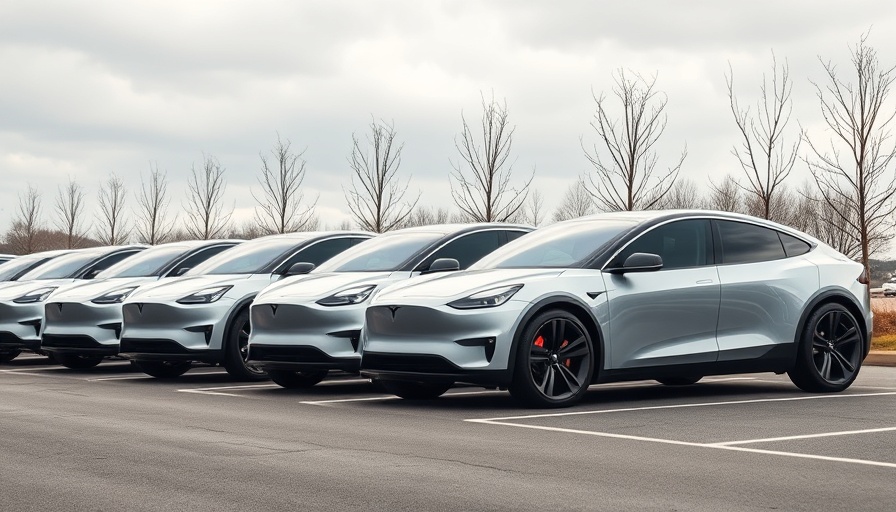
The Troublesome Trade-In Value of Tesla's Cybertruck
In a significant move, Tesla has finally opened up the opportunity for Cybertruck owners to trade in their vehicles. However, the reception has been notably unfavorable, shedding light on the disturbing depreciation rates these vehicles are experiencing. Reports indicate that owners are facing drops in value of nearly 45%, prompting serious concerns for prospective buyers and current owners alike. With Elon Musk's brand reputation intertwined with the Cybertruck's perceived value, many are wondering what this means for Tesla's future in the electric vehicle market.
Understanding Cybertruck Value Depreciation
Two notable case studies illustrate just how drastic the depreciation can be. A 2024 AWD Cybertruck originally purchased for $100,000 was quoted a trade-in value of $63,100, representing a 37% loss even after less than 20,000 miles. Meanwhile, a top-of-the-line $127,000 Cyberbeast, acquired only eight months ago, has plummeted to a valuation of $78,200. Such steep decreases raise pertinent questions about the economic viability of owning these electric vehicles.
Company Impacts and Higher Stakes
The depreciation issues are not isolated; they are symptomatic of bigger challenges Tesla faces. The brand's earlier policy that forbidden owners from reselling their Cybertrucks likely played a role in postponing trade-in requests. Such restrictions are often instituted by manufacturers to combat vehicle scalping, but they can also backfire, alienating customers and fueling negative perceptions—especially when compounded by quality control issues, such as reported problems with runaway gas pedals and quality of interior finishes.
Examining the Broader EV Market Trends
The Cybertruck's experience is reflective of an overarching trend in the electric vehicle (EV) market, where depreciation rates can mimic or even surpass 50% within the first year of ownership. As manufacturers look to capture market shares against established competitors, the sustainability of such business models comes under scrutiny. This scenario additionally opens discussions about the resilience of the EV sector amid environmental concerns and push-back for failing to meet quality control expectations.
The Consequences for Tesla and Electrification Efforts
Moving forward, Tesla must navigate not just the financial impacts of the Cybertruck’s trade-in values, but also the reputational fallout from falling resale values. Given that EVs like the Cybertruck are promoted as a sustainable choice for environmentally-conscious consumers, these trade-in turbulence could discourage future sales. Tesla's approach to reformatting their sales strategy and addressing consumer concerns could potentially yield insights that may save time and capital in the long run.
Decisions to Consider in the Future of EV Ownership
For business professionals evaluating investment in electric vehicles, it’s crucial to monitor these depreciation trends closely. Understanding the balance of brand loyalty against fiscal realities can lead to smart purchasing decisions—essentially weighing whether to invest in new EV technology against existing resale value realities. Expertise in the sector will likely pay dividends as consumers increasingly demand transparency regarding long-term value and equity.
The current depreciation situation emphasizes a critical juncture for both manufacturers like Tesla and buyers alike. As the EV market continually evolves, a fresh lens on investment strategies may be required to navigate these challenges effectively. Whether you're an engineer, marketer, or CEO, staying informed is more essential than ever.
As Tesla maneuvers through these choppy waters, stakeholders in the electrical vehicle market should remain vigilant and proactive. The opportunity to voice concerns, positively influence policy reforms, and redefine customer relationships is ripe for the taking. Investing time to understand these trends could place you ahead of the curve in your industry.
 Add Row
Add Row  Add
Add 




 Add Row
Add Row  Add
Add 

Write A Comment